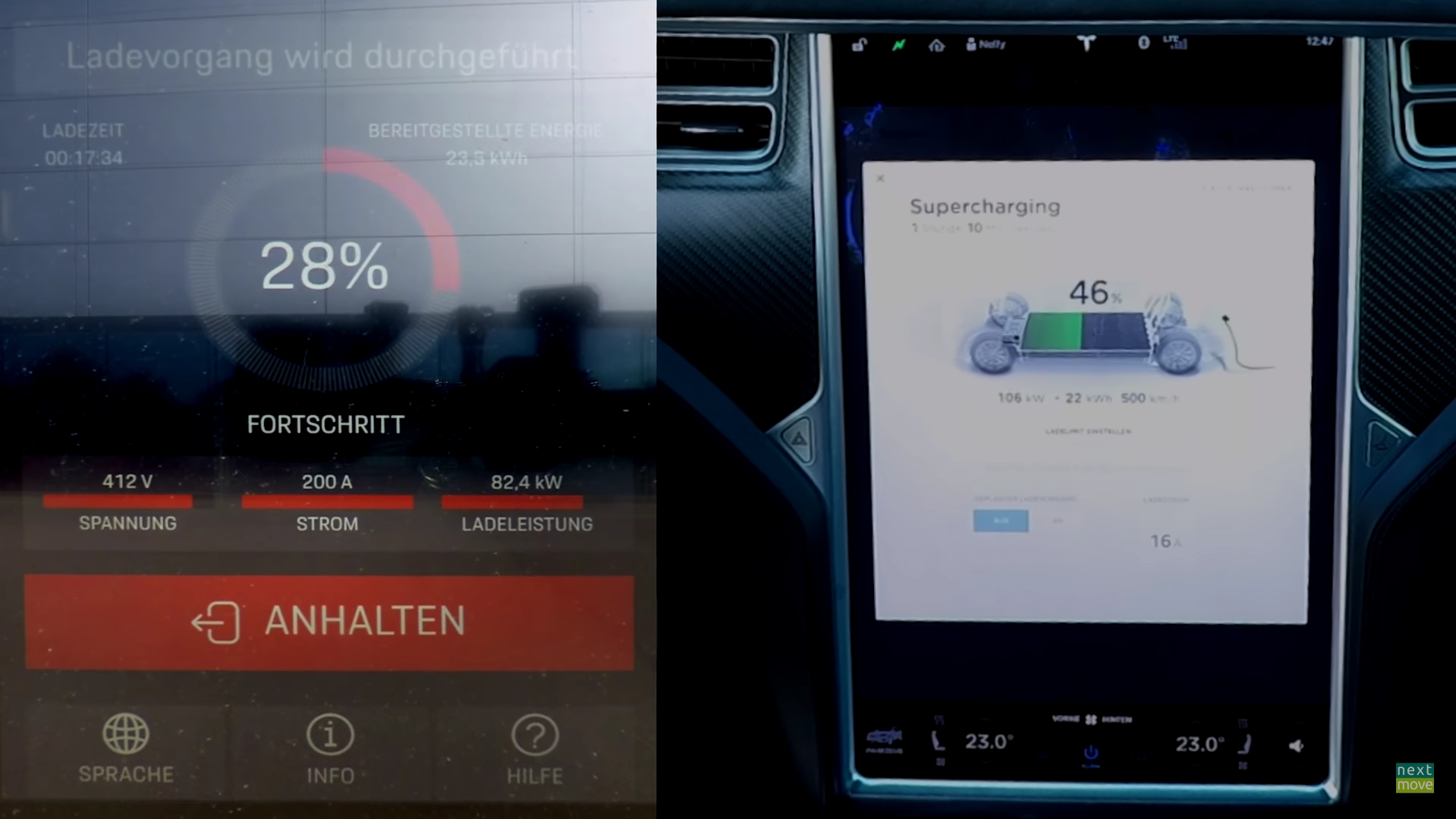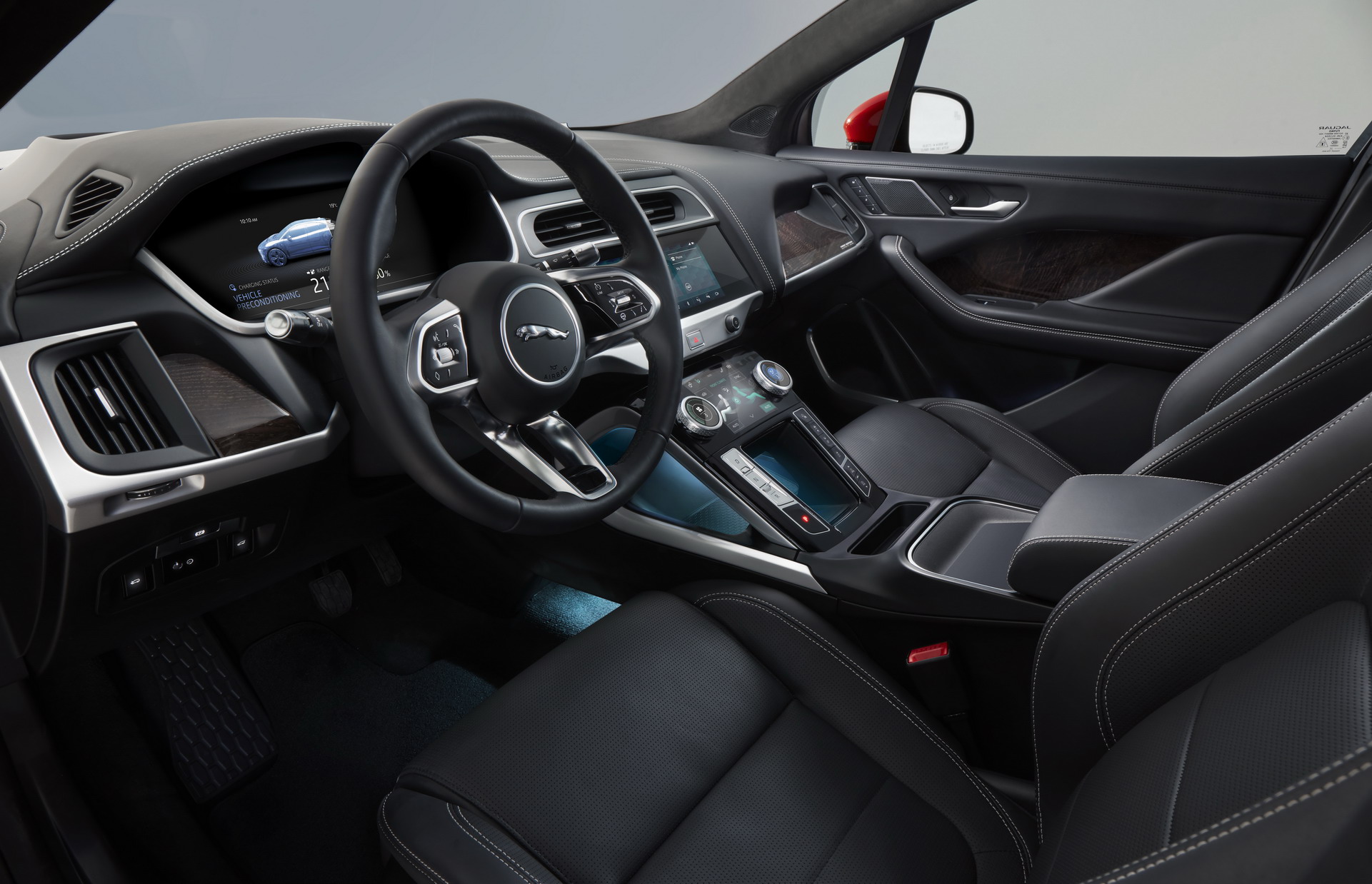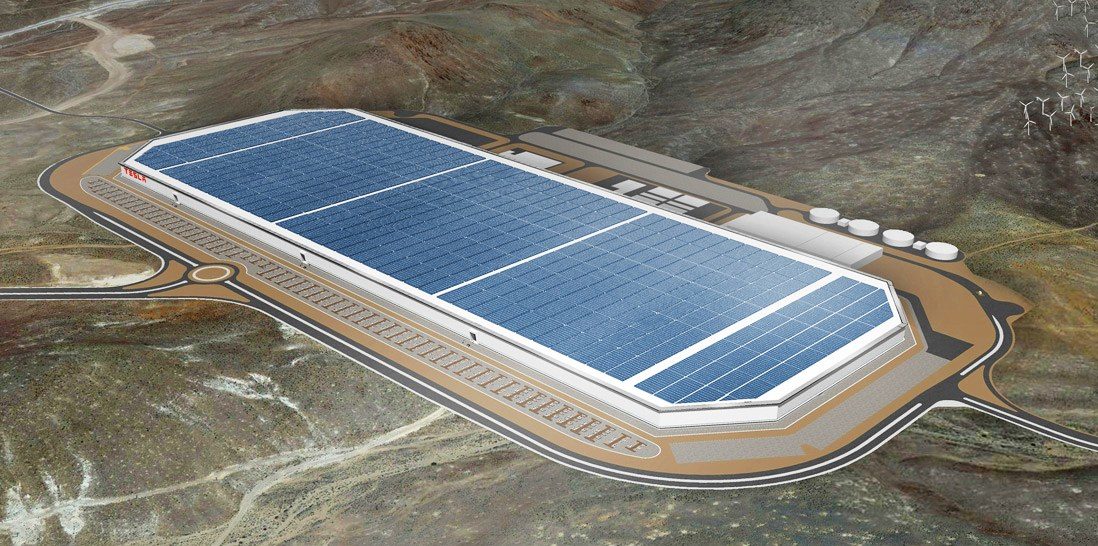

News
Tesla’s edge in battery and charging tech emerges in Model X vs Jaguar I-PACE range test
With just 15 years of experience under its belt, Tesla remains a neophyte in the automotive industry. Despite its short tenure, the upstart electric car maker continues to establish itself as a leader in battery technology and charging infrastructure. Tesla’s advantages in these fields became prominent in a real-world test between the Model X 90D and the Jaguar I-PACE in Germany earlier this month, when the two vehicles went head-to-head in a battery consumption and charging test.
Batteries are a core part of Tesla’s business. Since the days of the original Roadster, Tesla has gone all-in with its battery technology, from the Model S and X’s 18650 cells to the Model 3’s more energy-dense 2170 cells. The same is true for Tesla’s Supercharger Network. The Silicon Valley-based carmaker has invested heavily in the expansion of its charging infrastructure, to the point where the company’s vehicles today are among the few electric cars that are almost as convenient as fossil fuel-powered vehicles for long-distance driving.
The Jaguar I-PACE is an all-electric crossover SUV that boasts plush interior accents and a 90 kWh battery. With its large battery pack, Jaguar estimates that the I-PACE should be able to travel up to 240 miles per charge. The vehicle is also compatible with DC rapid chargers, including the upcoming IONITY Network, which is capable of providing an output of up to 350 kW. As shown by a range and battery consumption test by German YouTube channel nextmove, though, it appears that the I-PACE’s highway consumption and charging speed leaves much to be desired.

The publication opted to drive both vehicles on the Autobahn at highway speeds, traveling from Jena to Berlin (a distance of 268 km/166 miles). With both vehicles having a 90 kWh battery pack, and with the Model X being larger and heavier, it initially seemed like the I-PACE would have no problem keeping pace with the American-made all-electric SUV. Midway through the test, though, it became evident that the Jaguar I-PACE, despite being smaller and lighter, was less efficient than the Model X. At speeds between 93 km/h (58 mph) and 110 km/h (68 mph), for example, the I-PACE showed an average consumption of 22.5 kWh/100 km (362 Wh/mi). The Model X, on the other hand, had a consumption of 17.5 kWh/100 km (282 Wh/mi). That makes the larger, heavier Model X around 23% more efficient than the Jaguar I-PACE.
The Tesla Model X also outshone the Jaguar I-PACE in terms of charging. The German publication opted to charge the I-PACE at an IONITY station in a Porsche dealership. IONITY’s stations are capable of proving up to 350 kW of output, but despite this, the I-PACE was limited to only 80-83 kW. In contrast, Tesla’s Supercharger Network was able to recharge the Model X 90D with more than 100 kW of output.
While Tesla’s superior battery tech and charging system were notable in the Model X versus Jaguar I-PACE test, it should be noted that the Model X in nextmove‘s video was still equipped with Tesla’s legacy 18650 battery cells, which are incredibly reliable but not as energy-dense as the 2170 cells found in the Model 3. Tesla’s 2170 cells have garnered rave reviews from auto veterans such as Sandy Munro, who noted that the batteries are superior to those currently in the market. Tesla will inevitably roll out its 2170 cells to the Model S and Model X, and once it does, legacy carmakers like Jaguar would likely find themselves chasing a moving target. This was mentioned by Tesla CEO Elon Musk in the third quarter earnings call, when he noted that the Model 3 is currently the “most efficient energy per mile electric vehicle out there.”

“We’ve got the best in terms of miles or kilometers per kilowatt hour, and we also have the lowest cost per kilowatt hour. This makes it very difficult for other companies to compete with Tesla because we’re the most efficient car and the lowest-cost batteries. So I do encourage our competitors to really make a huge investment. And we’ve been saying that for a long time. And then they are only in this competitive disadvantage because they didn’t. We try to help them as much as we could, and they didn’t want to take our help.
“They can use our Supercharger network if they can just have an adapter for our — connector or something. We want to be as helpful as possible to the rest of the industry. The fact of the matter is we made the investment in the Gigafactory, and other companies didn’t. And we put a lot of effort into having extremely efficient cars, which are having the most efficient powertrains, and the other companies didn’t. But that’s what has put us in quite a strong competitive position right now.”
Back when Elon Musk outlined his plans for starting Gigafactory 1 as a facility specifically designed to manufacture batteries for Tesla’s electric cars; many were skeptical. In 2014, for example, the MIT Technology Review published an article expressing reservations about the project, arguing that the Gigafactory would be a risky gambit for Tesla since it would be difficult to determine if demand for Tesla’s electric cars would be consistent. The Supercharger Network was largely dismissed by the company’s skeptics as well, with critics stating that once other automakers like GM decide to go all-in on the electric car movement, they would be able to leapfrog Tesla’s charging system. As legacy carmakers are coming to the realization that it is not so easy to build electric cars, and as vehicles like the I-PACE lag behind Tesla’s legacy battery technology in the Model X 90D, it seems like Elon Musk’s “I told you so” moment in the past earnings call was well-justified.
Watch nextmove‘s test of the Model X 90D and the Jaguar I-PACE in the video below.
News
Tesla begins Robotaxi certification push in Arizona: report
Tesla seems serious about expanding its Robotaxi service to several states in the coming months.

Tesla has initiated discussions with Arizona transportation regulators to certify its driverless Robotaxi service in the state, as per a recent report from Bloomberg News. The move follows Tesla’s launch of its Robotaxi pilot program in Austin, Texas, as well as CEO Elon Musk’s recent comments about the service’s expansion in the Bay Area.
The Arizona Department of Transportation confirmed to Bloomberg that Tesla has reached out to begin the certification process for autonomous ride-sharing operations in the state. While details remain limited, the outreach suggests that Tesla is serious about expanding its driverless Robotaxi service to several territories in the coming months.
The Arizona development comes as Tesla prepares to expand its service area in Austin this weekend, as per CEO Elon Musk in a post on X. Musk also stated that Tesla is targeting the San Francisco Bay Area as its next major market, with a potential launch “in a month or two,” pending regulatory approvals.
Tesla first launched its autonomous ride-hailing program on June 22 in Austin with a small fleet of Model Y vehicles, accompanied by a Tesla employee in the passenger seat to monitor safety. While still classified as a test, Musk has said the program will expand to about 1,000 vehicles in the coming months. Tesla will later upgrade its Robotaxi fleet with the Cyercab, a two-seater that is designed without a steering wheel.
Sightings of Cybercab castings around the Giga Texas complex suggests that Tesla may be ramping the initial trial production of the self-driving two-seater. Tesla, for its part, has noted in the past that volume production of the Cybercab is expected to start sometime next year.
In California, Tesla has already applied for a transportation charter-party carrier permit from the state’s Public Utilities Commission. The company is reportedly taking a phased approach to operating in California, with the Robotaxi service starting with pre-arranged rides for employees in vehicles with safety drivers.
News
Tesla sets November 6 date for 2025 Annual Shareholder Meeting
The automaker announced the date on Thursday in a Form 8-K.

Tesla has scheduled its 2025 annual shareholder meeting for November 6, addressing investor concerns that the company was nearing a legal deadline to hold the event.
The automaker announced the date on Thursday in a Form 8-K submitted to the United States Securities and Exchange Commission (SEC). The company also listed a new proposal submission deadline of July 31 for items to be included in the proxy statement.
Tesla’s announcement followed calls from a group of 27 shareholders, including the leaders of large public pension funds, which urged Tesla’s board to formally set the meeting date, as noted in a report from The Wall Street Journal.
The group noted that under Texas law, where Tesla is now incorporated, companies must hold annual meetings within 13 months of the last one if requested by shareholders. Tesla’s previous annual shareholder meeting was held on June 13, 2024, which placed the July 13 deadline in focus.
Tesla originally stated in its 2024 annual report that it would file its proxy statement by the end of April. However, an amended filing on April 30 indicated that the Board of Directors had not yet finalized a meeting date, at least at the time.
The April filing also confirmed that Tesla’s board had formed a special committee to evaluate certain matters related to CEO Elon Musk’s compensation plan. Musk’s CEO performance award remains at the center of a lengthy legal dispute in Delaware, Tesla’s former state of incorporation.
Due to the aftermath of Musk’s legal dispute about his compensation plan in Delaware, he has not been paid for his work at Tesla for several years. Musk, for his part, has noted that he is more concerned about his voting stake in Tesla than his actual salary.
At last year’s annual meeting, TSLA shareholders voted to reapprove Elon Musk’s compensation plan and ratified Tesla’s decision to relocate its legal domicile from Delaware to Texas.
Elon Musk
Grok coming to Tesla vehicles next week “at the latest:” Elon Musk
Grok’s rollout to Tesla vehicles is expected to begin next week at the latest.

Elon Musk announced on Thursday that Grok, the large language model developed by his startup xAI, will soon be available in Tesla vehicles. Grok’s rollout to Tesla vehicles is expected to begin next week at the latest, further deepening the ties between the two Elon Musk-led companies.
Tesla–xAI synergy
Musk confirmed the news on X shortly after livestreaming the release of Grok 4, xAI’s latest large language model. “Grok is coming to Tesla vehicles very soon. Next week at the latest,” Musk wrote in a post on social media platform X.
During the livestream, Musk and several members of the xAI team highlighted several upgrades to Grok 4’s voice capabilities and performance metrics, positioning the LLM as competitive with top-tier models from OpenAI and Google.
The in-vehicle integration of Grok marks a new chapter in Tesla’s AI development. While Tesla has long relied on in-house systems for autonomous driving and energy optimization, Grok’s integration would introduce conversational AI directly into its vehicles’ user experience. This integration could potentially improve customer interaction inside Tesla vehicles.
xAI and Tesla’s collaborative footprint
Grok’s upcoming rollout to Tesla vehicles adds to a growing business relationship between Tesla and xAI. Earlier this year, Tesla disclosed that it generated $198.3 million in revenue from commercial, consulting, and support agreements with xAI, as noted in a report from Bloomberg News. A large portion of that amount, however, came from the sale of Megapack energy storage systems to the artificial intelligence startup.
In July 2023, Musk polled X users about whether Tesla should invest $5 billion in xAI. While no formal investment has been made so far, 68% of poll participants voted yes, and Musk has since stated that the idea would be discussed with Tesla’s board.
-

 Elon Musk1 week ago
Elon Musk1 week agoTesla investors will be shocked by Jim Cramer’s latest assessment
-

 Elon Musk3 days ago
Elon Musk3 days agoElon Musk confirms Grok 4 launch on July 9 with livestream event
-

 Elon Musk17 hours ago
Elon Musk17 hours agoxAI launches Grok 4 with new $300/month SuperGrok Heavy subscription
-

 News7 days ago
News7 days agoTesla Model 3 ranks as the safest new car in Europe for 2025, per Euro NCAP tests
-

 Elon Musk2 weeks ago
Elon Musk2 weeks agoA Tesla just delivered itself to a customer autonomously, Elon Musk confirms
-

 Elon Musk1 week ago
Elon Musk1 week agoxAI’s Memphis data center receives air permit despite community criticism
-

 Elon Musk2 weeks ago
Elon Musk2 weeks agoTesla’s Omead Afshar, known as Elon Musk’s right-hand man, leaves company: reports
-

 News2 weeks ago
News2 weeks agoXiaomi CEO congratulates Tesla on first FSD delivery: “We have to continue learning!”
















